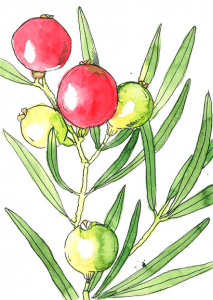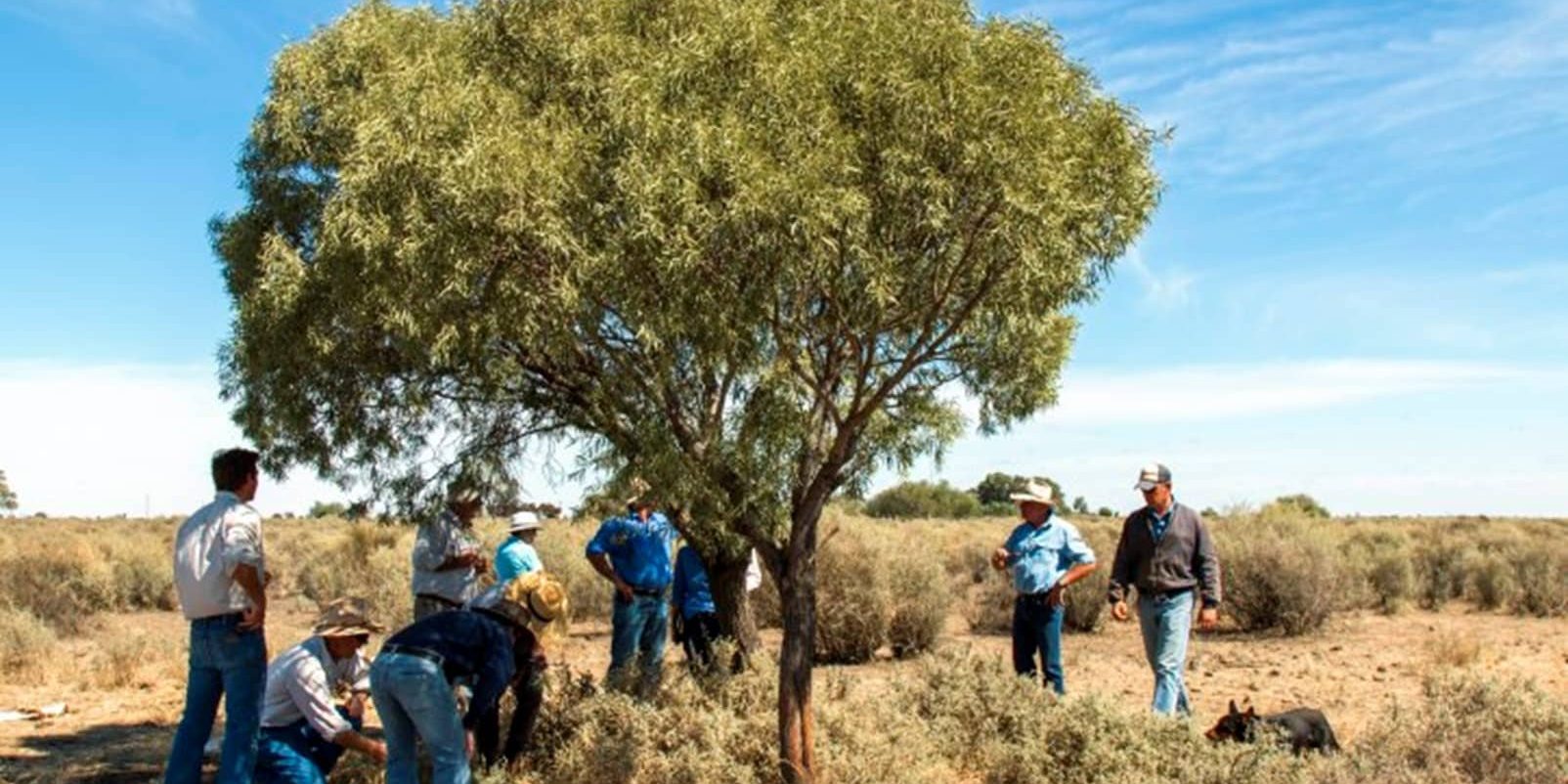A Word from the Sustainable Agriculture Facilitator (May 2025)
The quandong tree, scientifically known as Santalum acuminatum, is a remarkable native Australian species with deep cultural, ecological, and culinary significance. For over 40,000 years, it has played a vital role in the lives of Indigenous Australians. Known as guwandhang in the Wiradjuri language and other Indigenous dialects, the quandong was more than just a food source – it was a symbol of connection to Country, a source of medicine, and a feature in Dreamtime stories. Its bright red fruit was eaten fresh or dried for later use, while the hard seeds were crafted into jewellery and ceremonial tools.
Botanically, the quandong is a small, evergreen tree or shrub that typically grows between one and six meters tall. It has slender, olive-green leaves and produces small, cream-colored flowers in late summer. Its most distinctive feature is its fruit: a vivid red drupe about the size of a cherry, with tart, tangy flesh surrounding a hard, woody seed. This seed, smooth and round, is often used in traditional crafts and has become a symbol of bushland resilience.
Growing a quandong tree is a unique horticultural challenge due to its hemiparasitic nature. This means it partially relies on the roots of nearby host plants to obtain water and nutrients. Successful propagation typically begins with seed collection and preparation. The hard seed coat must be scarified or soaked in warm water to encourage germination. Once prepared, the seed is planted near a suitable host plant – commonly species of Acacia, native grasses or shrubs such as Ruby Saltbush. These hosts provide the essential support the young quandong needs to thrive. While seed propagation is the most common method, grafting is sometimes used in commercial settings to improve fruit yield; cuttings are rarely successful due to the plant’s parasitic requirements.
Ecologically, the quandong is a keystone species in arid and semi-arid environments. Its fruit is a vital food source for native birds such as emus and parrots, which also help disperse its seeds. The flowers attract pollinators like native bees, and the tree itself provides shelter and sustenance for a variety of insects and small animals. By planting quandongs, landholders and conservationists contribute to biodiversity, soil stability, and the health of native ecosystems.
The fruit of the quandong is enjoying a resurgence in popularity, particularly in the bushfood and gourmet culinary scenes. Rich in vitamin C, antioxidants, and dietary fiber, it is used in jams, chutneys, sauces, pies, and even liqueurs. Its tart flavor and nutritional value make it a favorite among chefs and health-conscious consumers alike. Traditionally, the fruit was also used to treat skin ailments and relieve pain, showcasing its medicinal as well as nutritional value.
In the Riverina region of New South Wales, the quandong is not as widespread as in central Australia, but it is gaining recognition. It can be found in conservation areas, native gardens, and bushland reserves, where it is promoted by local councils and Landcare groups for its ecological and cultural importance. Its ability to thrive in poor soils and withstand drought makes it an ideal candidate for regenerative agriculture and sustainable landscaping in the region.
The quandong tree is more than just a plant – it is a living link to Australia’s ancient past, a provider for its present, and a resilient symbol for its future. By planting and protecting quandongs, we not only support wildlife and restore ecosystems, but also honor the deep cultural knowledge and traditions of Australia’s First People.
This article was written by Jade Auldist. Jade is the Sustainable Agriculture Facilitator for the Riverina region. Her role supports farmers, industry and community groups (including Landcare Groups) to adopt new and innovative sustainable agriculture practices.
For further information on this article, please contact Jade at jade.auldist@lls.nsw.gov.au.







